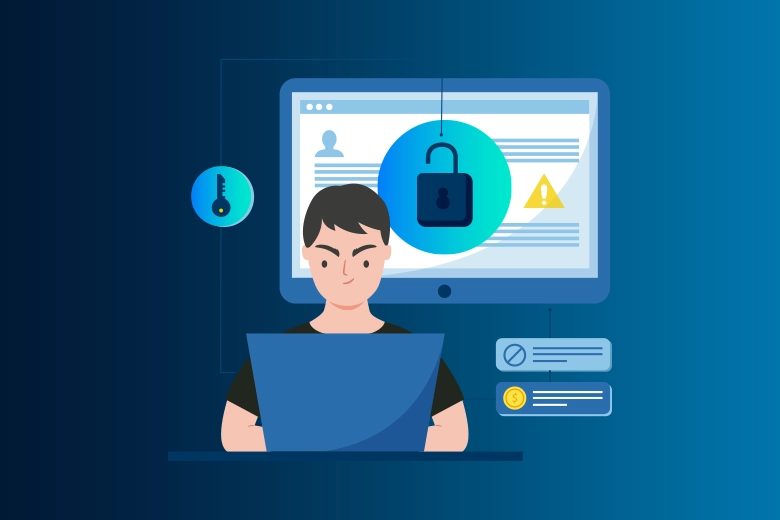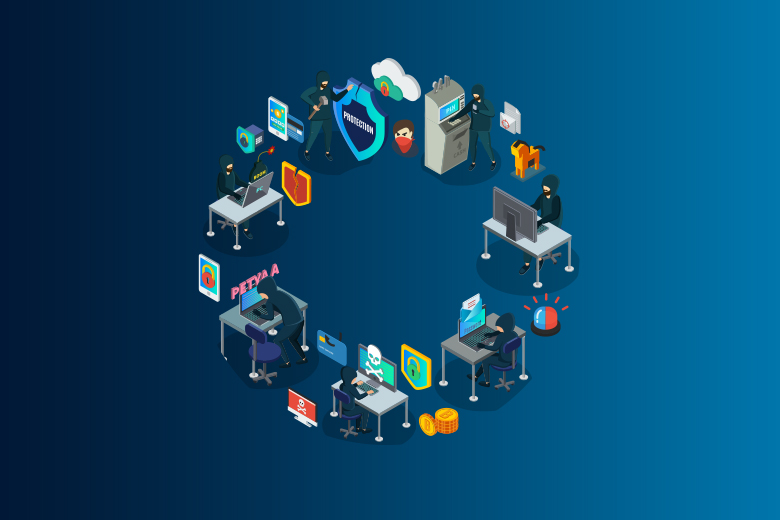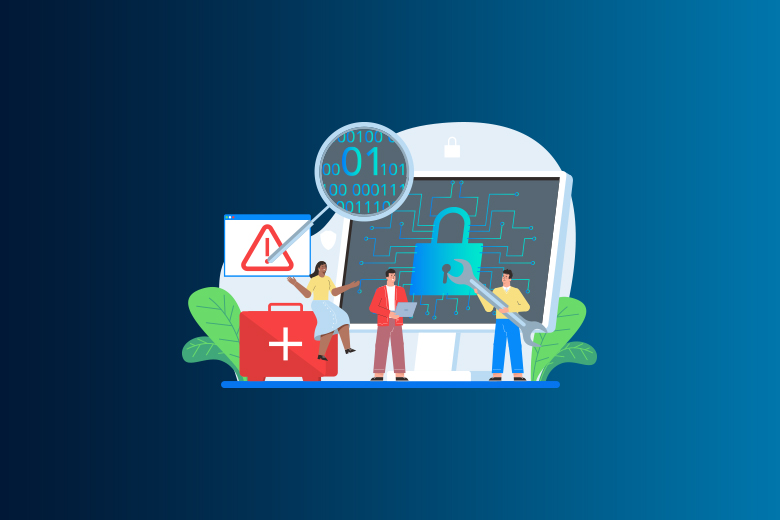28 March 2024
SafeAeon Inc.There is always an arms race going on in defense. As the number of breaches rises, companies are under more and more pressure to strengthen their defenses. SIEM (Security Information and Event Management) and MDR (Managed Detection and Response) are two very important tools in this fight. However, it can be hard to decide between SIEM and MDR. Both have their benefits, and it's important to know these differences to choose the right one for your network.
In 2023, the average cost of data theft around the world was an amazing $4.35 million. This scary number shows how important it is to have strong security measures. Both SIEM and MDR have strong features, but they are best used for different things. When it comes to your security technology, SIEM is like the brain. It gets log data from different network devices, apps, and security tools and looks it over. SIEM can find suspicious behavior and possible threats by putting this data together. But SIEM is mostly used to find things. Security staff with the right skills are needed to read the info and take action.
MDR, on the other hand, does more than just find things. A team of security experts works with SIEM features as part of a managed service. These analysts keep an eye on your network all the time, look at SIEM data, look into security events, and take action to stop threats. This around-the-clock watchfulness fills in a crucial gap for businesses that don't have the in-house knowledge to handle complicated security tools.
What Is MDR?
Managed Detection and Response (MDR) is a strategic relationship for businesses that don't have the resources to run their own advanced security operations center (SOC). When a business works with an MDR service, they give some of their security tasks to outside experts. Some important things that an MDR service can do are:
Alert Investigation: Security teams get a lot of alerts, so MDR providers sort through them using machine learning, advanced data analysis, and close review by experts to tell the difference between real threats and false alarms.
Incident triage: Quick and effective reaction is key to minimizing the damage from security incidents. MDR services put events in order of importance, making sure that the most important ones get immediate care.
Fixing the problem: To lessen the damage from security breaches, you need to move quickly and with expertise. To lessen their effects, MDR teams handle incidents in client settings from afar.
Proactive Threat Hunting: To stop threats that get past the first line of defense, MDR includes proactive searching for signs of breaches that were not noticed, followed by fixing the problem.
There are many benefits to working with an MDR service, such as:
Expertise on Demand: To help companies fill the skills gap in cybersecurity, MDR provides them with a strong group of security experts and professionals ready to take on tough problems.
Cutting-edge Threat Detection: MDR companies are very good at finding and stopping sophisticated threats from advanced persistent threats (APTs) because they use the newest security technology.
Accelerated Threat Response: The longer it takes to find cybersecurity issues, the worse they are. Service level agreements (SLAs) back up MDR services, which promise quick detection and reaction.
Elevated Security Posture: MDR makes it easier to implement a full security program at a much lower cost than developing it in-house. Because they use economies of scale, MDR providers can offer expert threat monitoring and reaction around the clock at a price that is easier on the wallet.
What is SIEM?
SIEM stands for Security Information and Event Management. It is a way to handle all of an organization's digital infrastructure's security. There are many security measures in an organization, but they often work alone and only collect small bits of data. This makes it hard to see what's going on and causes a lot of fake alarms.
SIEM systems work by combining data from these different security solutions, making it consistent, and then studying the whole set of data. This lets the security alert system and insights be smarter since they can use more data sources, like threat intelligence feeds and internal security rules. The result is a more complete picture of the security situation within the company.
SIEM is very important for many security tasks, including:
Threat Detection and Analysis: It uses the collected security data to send out alerts that help security teams find and study possible threats.
Digital Forensics and Threat Hunting: It gives forensic analysts and threat hunters detailed data that has already been studied, which makes their investigations easier.
Regulatory Compliance: It helps with compliance reporting by giving a lot of security information that shows that needed controls are being used and there have been no breaches.
SIEM has some problems, like the fact that it needs skilled workers, combining different data sources can be hard, it relies on predefined threat detection rules, and it can give false positives if alerts aren't checked properly.
SIEM vs. MDR
Aiming to improve an organization's security, both Managed Detection and Response (MDR) and SIEM do so in different ways. SIEM's main job is to refine and reduce the number of reports from different security systems into more useful, but still possibly wrong, messages. It's up to the company to actively run and manage the SIEM system, which includes following up on alerts.
On the other hand, MDR gives a lot of the security work to an outside team with the right skills. This group not only handles alerts but also fixes problems and looks for threats before they happen. Even though some companies may still have their security teams, MDR offers more knowledge and tools, making security control less of a hassle.
SIEM (Security Information and Event Management) and MDR (Managed Detection and Response) are both very important for making a company safer from cyber threats, but they work in very different ways and focus on very different things.
Main Goal: SIEM systems are made to keep an eye on and analyze data for known threats and strange activities, basically looking for things that aren't normal. MDR, on the other hand, focuses on finding and reducing threats that haven't been seen before.
Technology and Skill: SIEM sorts through and makes sense of security data by using both software and hardware. MDR, on the other hand, is a service model that combines technology, methods for following procedures, and the knowledge of cybersecurity experts.
Approach to Threat Management: SIEM works more reactively, gathering and analyzing data to send out alerts that require a company to act. MDR is known for being aggressive, actively looking for threats, and finding them early.
Effects on costs: An IDG study says that managing an in-house SIEM solution costs about $607,000 a year on average. This is usually more expensive than the cost of MDR treatments. The cost of SIEM systems is higher because they are more complicated and have more features. MDR is a better and more cost-effective choice for businesses that don't have complex infrastructures or specialized security operation centers (SOCs).
Conclusion
When it comes to network defense, companies have to make a big choice: between SIEM and MDR. This choice is more than just a matter of personal taste; it's also a matter of national security. SIEM gives people who are ready to handle complex security data a full set of tools. It works best for businesses that have the means and know-how to use complicated systems. On the other hand, MDR offers a simpler way to defend yourself. It's perfect for businesses that want security led by experts but don't need to know a lot about hacking. MDR is appealing because it handles threat response and tracking, which makes things easier for teams that don't have a lot of cybersecurity staff.
When making this choice, businesses need to carefully think about their wants, resources, and security goals. Whether a company chooses SIEM or MDR, the choice should be based on its unique needs. It should improve network defenses against new and changing cyber threats.
Whether you choose SIEM or MDR, you are committing to making your network safer. But the choice needs to be looked at again and again. Threats and organizations' growth must change over time. With SafeAeon assistance you can choose among the best for your business. Whether you choose SIEM's thorough control or MDR's expert management. It keeps the company's online image safe.














